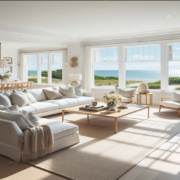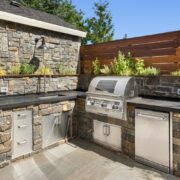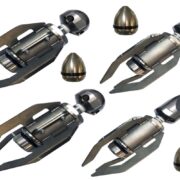Air purifiers are making a beeline in an increasing number of households due to the global pollution scare. The harmful effects of pollutants like Volatile Organic Compounds (VOC), Particulates, and harmful gases like CO2, NOx, etc. have gained more awareness among people, which has led to this trend.
Some homes are large enough to require a centralized HVAC system to cater to their ventilation. In such cases, air purifiers need to be installed into the HVAC system to clean the air of the entire house. They are called whole-house air purifiers, and they help keep the harmful substances from entering the house altogether.
Blanket Coverage
Whole-house purifiers come with a slew of filter options that remove certain specific types of pollutants each. Considering it is for the whole house, you may go for an all-of-the-above approach to remove every possible pollutant. Going through the available options in the market and thoroughly understanding your needs will help get the most appropriate one.
Technology Options
The most common technology is the HEPA (High-Efficiency Particulate Air) filter, which comes as a flat mesh panel and can remove 80% of the particulates. It can also remove allergens like tobacco smoke, pollen, dust mites, and pet dander. This filter can remove particulates as small as 3 microns in size, causing serious ailments but can’t be filtered easily.
To remove viruses and bacteria, UV filters should be installed. They come as a unit attached to the purifier or can be bought and installed separately. These use UV rays to eradicate the mentioned threats right before they can enter the ductwork. Houses with chronic illness patients must have them installed.
Industry Standards
Clean Air Delivery Rate (CADR) is an industry standard used to determine how effectively a purifier cleans certain types of pollutants in the air. It ranges from 10-450, and the effect increases with the number. The number indicates the size of the room that can benefit from the purifier. The typical allergens it covers are dust whole house air purifiers, tobacco smoke, and pollen.
The standard to note is the Air Changes per Hour (ACH) rate. It refers to how much dirty old air can be replaced by the fresh and new air coming from the purifier. The higher the rating, the more efficient the system is in replacing used air. It will be found in the product description/specification section of whole-house air purifiers.
Costs
The best purifiers tend to be on the pricier side as they come loaded with features. Hence, they can’t be had at a reasonable price at all. The model and location will have a great bearing on it, including unit costs, installation, and maintenance.
UV systems cast about $400 with annual bulb replacement requirements. HEPA systems cost about $1000 and around $70 in annual replacement costs.
Manufacturer
Reputed and established manufacturers offer the latest and best with long term warranties for their purifiers. They can also provide installation and maintenance services for the purifiers, with guaranteed original parts as replacements.
Whole-house air purifiers are an elegant solution to a rather large and complicated problem. They work behind the scenes and stop pollutants from doing so within your house.













Comments